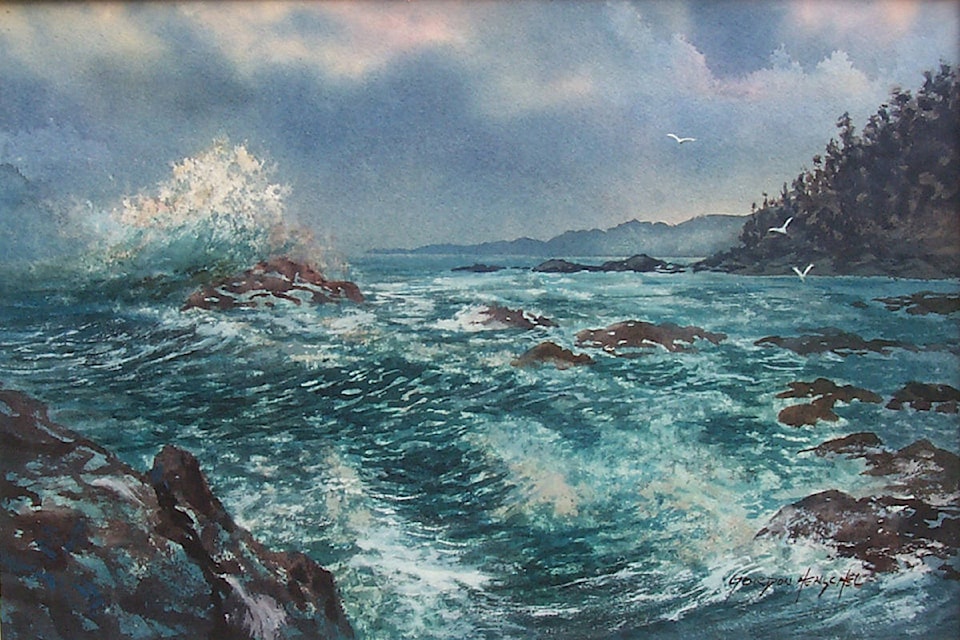Fall is the time of year when the storms that have brewed in the cauldron of the Gulf of Alaska come boiling over to hit the shores of North Vancouver Island; especially on the west side where waves often of monstrous proportions, roll uninterrupted all the way from the Bering Sea. The theory goes that every seventh one is larger than the rest and that the surf-watchers that have been snatched from the rocks to a watery death probably were unaware of this fact. Transfixed by the rhythm of the sea, they watched six go by only to be swept away by the seventh monster wave. It never ceases to create a spectacular display, however, and I’ve tried to capture the excitement in this painting I’ve named, “The Seventh Wave”.
There are many great spots to go storm watching on North Island with an impressive show almost anywhere within easy reach; such as Storey’s Beach at high tide when the southeasters start blowing. For the real “biggies”, however, you need to take the trek out to the west coast where there are basically three easily reachable areas to enjoy the fall and winter storms.
The first and safest, with its great beaches and challenging headlands, is San Josef Bay, reached by a forty-minute hike on a well-groomed trail. There are two main beaches. If you can time your arrival to just before the low tide, it will give you time to walk down the first beach and around the headland to the second one; a beach that culminates with picturesque hoodoo rocks complete with coastal pines that look like a bonsai garden. If the tide is higher, you will have to hike across the headland over a rather precipitous trail to get to the second beach. If the storms are cooperating, the breakers on these long beaches are world class; a wet suit, a surfboard and you’re in business!
The second spot for surf-watching is Raft Cove Provincial Park, also reached by a forty minute trail that is not as well groomed but certainly hike able by anyone in reasonably good condition. Once you reach the ocean the three kilometre walk to the mouth of the Macjack River is a delight in any weather. It takes you along some good beaches interspersed with dynamically placed headlands – a beachcomber’s dream.
The third, and last, spot is for those unwilling or incapable of hiking for any length of time and has been labelled, “Ten Minute Beach”. It’s reached by driving down Coast Main, a road that connects with Ronning Main, past the Raft Cove parking lot. Just over a concrete bridge is a parking area from which you can see the ocean from your car but it requires about a ten-minute walk to get to the small beach below. There are rugged rocks and peninsulas surrounding the beach providing vantage points from which you can watch the storms play out their dramas. It is also a place requiring great caution, especially when the tide is in.
As much as I like to paint on location, this is one spot where a camera is a great tool to study the wave action. As you sit and wait for that perfect shot, when a huge white spume is catapulted high into the air, remember the seventh wave. The ocean in all its beauty is very cold, very powerful and very unforgiving! Choose a spectator’s seat only after you’ve observed the scene for a considerable length of time. Dress warmly (long johns are great when you’re sitting still for awhile), take a thermos of your favourite hot drink and take the time to enjoy this volatile part of the year.
Comments: email: gordon@cablerocket.com.
Website: www.henschel.ca.
